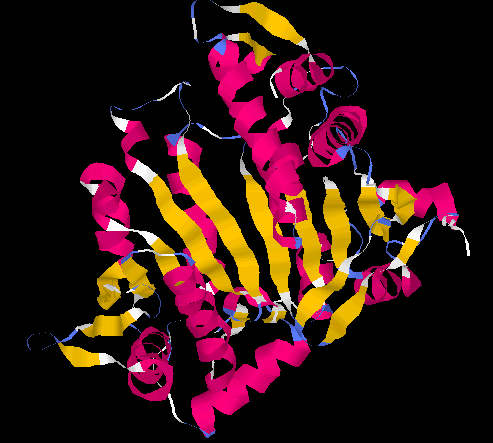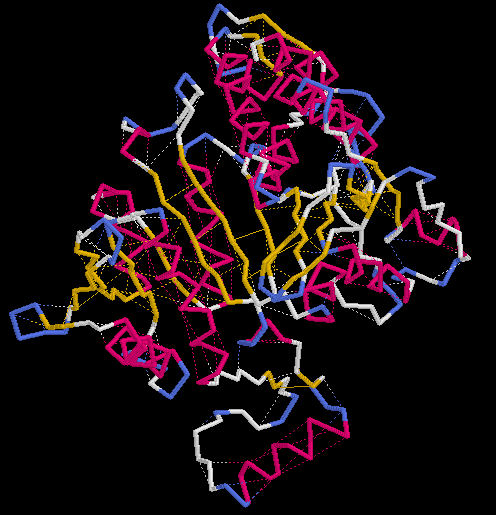Using the Web for Teaching -
Emphasis on Visuals
If we want students to have 24 x 7 access to
reading materials, paper versions are still the best medium. However,
paper versions, especially photocopies in black and white, cannot
provide all the information that can be provided on the web. This
page illustrates four ways I use thew web for enhanced communication
for teaching.
Virtual Reprints
Virtual reprints is the term I use to describe
online reproductions of primary literature. Photocopies of originals
suffer from several disadvantages:
1) Subtle details are lost in figure so students cannot evaluate
data for themselves and therefore rely on authors' interpretations instead
of developing their own. Example
2) Some colors do not photocopy at all and figures wind up
at black boxes (in more ways than one). Example
3) I project figrues in class and label them on white boards
so everyone can see the class discussion develop. Example
Interactive Viewing Molecules
in "3D"
Much of biology occurs at the molecular level,
which is too small for some students to comprehend. Since all
molecules occupy space and have specific shapes, it is important
for students to understand the shapes. One rule in biology is
that form meets function. To understand function, students need
to understand the structure.
1) Chime is a free web plugin that allows the user to view
molecules interactively. Students can view small molecules and compare their
structures. Example
2) Students can look at one protein in different ways. Example



3) Chime tutorials can be created which guide students through
hidden facets of a protein's structure. Example
Interactive Animations
Many text books have very good content, both
in text and in graphics. However, some concepts are so difficult
that students have a difficult time constructing mental models
which put all the information into one integrated picture. To
help students with difficult concepts, I have begun to create
Molecular Movies which summarize well written text. These animations
cannot replace the text but they help students who have read the
material.
1) This example shows how B cells discover the body has a bacterial
infection and they must repsond by making antibodies.
2) Here is a second example that shows how B cells are allowed to survive
is they do not recognize "self-proteins".
Prelab Tutorials
There are some methods that are easier to understand
if students can see what is supposed to happen, rather than just
reading about them. This is not unusual; imagine learning how
to tie your shoes by only reading directions but never seeing
anyone demonstrate how. For this reason, I have started to create
tutorials for some methods. The idea is for students to look before
they come to lab and/or for me to show them with the AV systems
so we can all watch at the same time.
This example
shows an interactive tutorial on the proper use of microscopes used in Introductory
Biology (Bio111). It combines image maps and mpeg movies. Internet Explorer
works best for the movies.

© Copyright 2000 Department of Biology,
Davidson College, Davidson, NC 28036
Send comments, questions, and suggestions to: macampbell@davidson.edu


